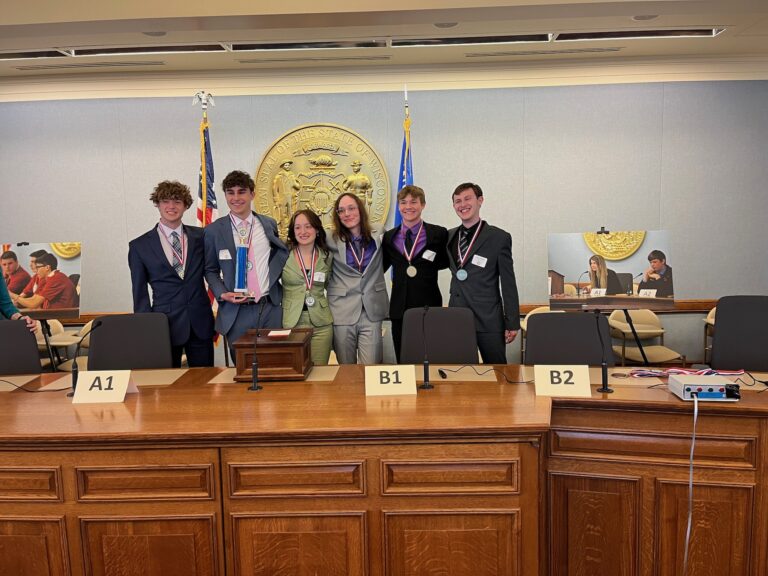The Capitol Report, produced by WisPolitics.com — a nonpartisan, Madison-based news service that specializes in coverage of government and politics — provides a weekly analysis of issues being debated in Wisconsin state government. It is underwritten by the WNA and produced exclusively for its members. WisPolitics.com President Jeff Mayers is a former editor and reporter for the Associated Press and a former political writer for the Wisconsin State Journal.
• Download this column as a Word document
• Download the WisPolitics.com logo
The good budget news just got even better.
Two recent news items show the latest:
— Wisconsin’s Medicaid fund is now projected to finish the fiscal year with a $774.8 million surplus — $269.9 million more than what was expected three months ago.
In September, the Department of Health Services expected a $504.9 million surplus in the Medicaid fund at the end of the biennium. The Department of Administration used that figure in November as it projected the state’s general fund would finish the fiscal year with a $6.6 billion surplus.
If the latest projection holds, it would push that surplus close to $6.9 billion.
In a letter to the Joint Finance Committee co-chairs, former DHS Secretary Karen Timberlake wrote the surplus was driven, in part, by the federal government continuing to provide states an enhanced reimbursement rate for those covered by the program.
In September, the agency expected the add-on to expire this coming March. But the omnibus spending bill approved last month added a ratcheting down of the add-on that will continue enhanced matching rates through the end of calendar year 2023.
The add-on has been 6.2 percentage points, and that will still end in March. The federal government, though, will move to a 5 percent add-on for the second quarter of calendar year 2023, 2.5 percent in the third quarter and 1.5 percent in the fourth quarter.
Other factors contributed to the increased surplus, including a downward trend in prescription drug costs.
— And a new report from the Wisconsin Policy Forum shows the combined state and local tax burden in Wisconsin fell in 2022 to its lowest share of income on record thanks to a new round of tax cuts and growing salaries.
In the fiscal year that ended June 30, state and local tax revenues accounted for 10.1 percent of personal income in the state, compared to 10.3 percent in the 2020-21 fiscal year.
Along with the $1 billion a year in state income tax cuts approved for 2021-22, property tax caps helped hold down local revenues. And the state saw personal income grow 6.7 percent in calendar year 2021, the most recent available.
Altogether, state and local tax collections rose to $35.36 billion for fiscal year 2022, up 4.1 percent from the $33.97 billion in the previous year. With income growth outstripping that increase in tax collections, it drove down the burden.
The forum and its predecessor the Wisconsin Taxpayers Alliance have been tracking the state-local tax burden since 1970. It peaked in 1971 at 14.7 percent.
So what does it all mean? Local government leaders hope it means increased shared revenue.
Gov. Tony Evers met recently with the mayors of Milwaukee, Madison, Racine, Green Bay and Kenosha to discuss funding for local communities, one day after the Democrat was sworn in for a second term.
Evers has previously announced he plans to increase shared revenue by 4 percent in each of the next two years in his upcoming budget. Shared revenue has been flat for decades.
The governor in a tweet shared a photo of the meeting. He said they discussed “improving how we invest in our local communities and keep them safe – and to ensure they can respond to basic and unique needs alike.”
Evers has proposed increasing shared revenue by $91.4 million over the upcoming biennium, which would amount to an increase of 4 percent in each year of the budget. He also has called for a $10 million supplement to fund public safety costs.
The state in 2022 provided $753 million in county and municipal aid in 2022. That’s down significantly from the $925 million provided in 2000.
Racine Mayor Cory Mason said the five local officials sought the meeting with Evers, adding his praise for Evers’ proposal. He said the key is persuading GOP legislative leaders to put some of the state’s projected $6.9 billion surplus toward the aid.
Mason, a former legislator, said candidates on both sides of the aisle talked during the fall election about the importance of funding public safety and now is the time to follow through with that commitment.
“They have the money. They have more money than they’ve ever had. It’s long past due to use some of it to fund the police,” Mason said.
Madison Mayor Satya Rhodes-Conway in a statement said the meeting was “productive.”
“I’m thankful that Gov. Evers has made increasing shared revenue a top priority for the state budget, and I urge all parties to work together to make sure that local governments large and small have the resources we need to keep our communities thriving,” Rhodes-Conway said.
For more, visit WisPolitics.com
The Capitol Report is written by editorial staff at WisPolitics.com, a nonpartisan, Madison-based news service that specializes in coverage of government and politics, and is distributed for publication by members of the Wisconsin Newspaper Association.
Copyright © WisPolitics.com



